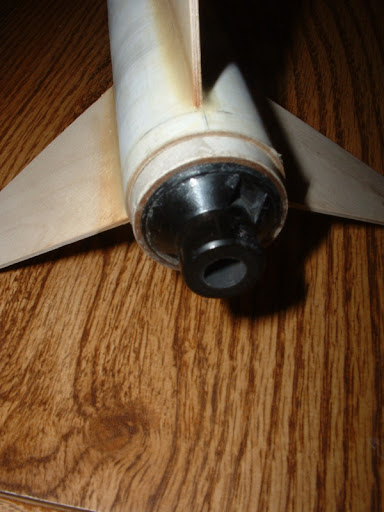MarkII
Well-Known Member
- Joined
- Jan 18, 2009
- Messages
- 8,250
- Reaction score
- 46
Anyone remember this minimum-diameter mid-power rockets from the 1980s?
Like many other rocketry-related things from the past three decades, I learned about these rockets and the company when I saw one of the company's (by then rechristened as Crown Rocket Technology) catalogs on Ninfinger.
I was immediately taken with the Lasor Series. SSRS/Crown thoughtfully included pretty complete dimensional information for their components and models in their catalog, so the Lasors looked like they would be easy to clone. Semroc had compatible parts.
There are no plans or assembly instructions for any of Lasors on any of the usual online sites, but I did find Steve Naquin's RockSim file for the Lasor 114 on the rocketreviews.com website. Steve's clone design deviates from the original Lasor 114 in a few ways. He identifies some of them, and i deduced others by comparing his components and dimensions with those listed in the catalog. His design was especially invaluable in providing me with a template for the fins.
Thanks to Steve, I have a fairly firm idea of the design of the Lasor 114. Other than the information provided in the catalog, I don't have any information for the other two models in the series, the Lasor 95 and the Lasor 134. I tweaked Steve's RockSim file to make it more closely agree with the catalog information (using Semroc parts). Then in order to create the other two, I used part dimensions from the catalog and scaled Steve's fin templates accordingly. I have no idea if this accurately represents the 95 and the 134, but it seemed like a reasonable assumption and it worked for my purposes.
Here is my basic Rocksim design file for my Lasor 114 clone.

View attachment SSRS Lasor 114 balsa nc.rkt
Like many other rocketry-related things from the past three decades, I learned about these rockets and the company when I saw one of the company's (by then rechristened as Crown Rocket Technology) catalogs on Ninfinger.
I was immediately taken with the Lasor Series. SSRS/Crown thoughtfully included pretty complete dimensional information for their components and models in their catalog, so the Lasors looked like they would be easy to clone. Semroc had compatible parts.
There are no plans or assembly instructions for any of Lasors on any of the usual online sites, but I did find Steve Naquin's RockSim file for the Lasor 114 on the rocketreviews.com website. Steve's clone design deviates from the original Lasor 114 in a few ways. He identifies some of them, and i deduced others by comparing his components and dimensions with those listed in the catalog. His design was especially invaluable in providing me with a template for the fins.
Thanks to Steve, I have a fairly firm idea of the design of the Lasor 114. Other than the information provided in the catalog, I don't have any information for the other two models in the series, the Lasor 95 and the Lasor 134. I tweaked Steve's RockSim file to make it more closely agree with the catalog information (using Semroc parts). Then in order to create the other two, I used part dimensions from the catalog and scaled Steve's fin templates accordingly. I have no idea if this accurately represents the 95 and the 134, but it seemed like a reasonable assumption and it worked for my purposes.
Here is my basic Rocksim design file for my Lasor 114 clone.

View attachment SSRS Lasor 114 balsa nc.rkt
Last edited:


















